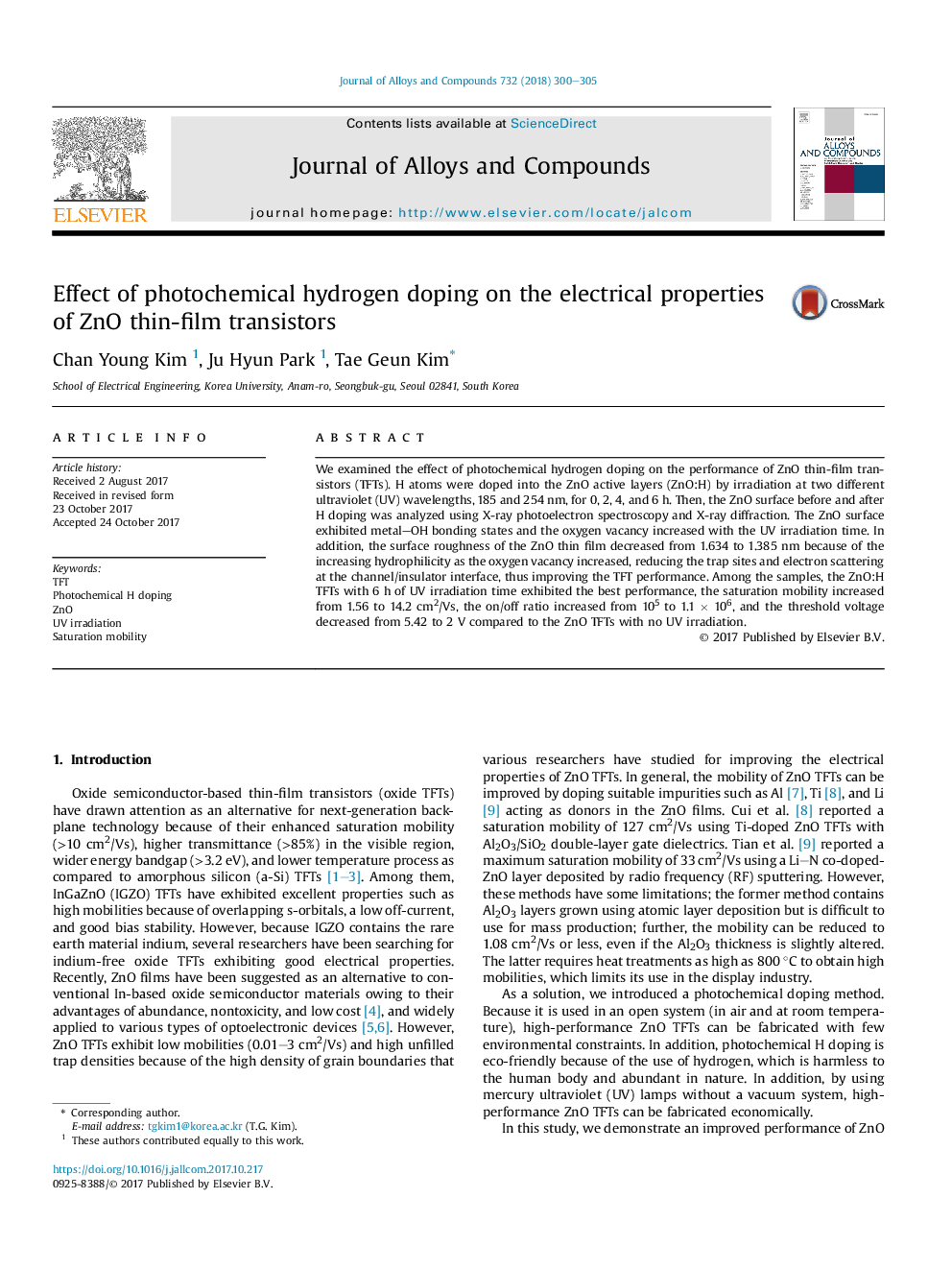| Article ID | Journal | Published Year | Pages | File Type |
|---|---|---|---|---|
| 7995002 | Journal of Alloys and Compounds | 2018 | 6 Pages |
Abstract
We examined the effect of photochemical hydrogen doping on the performance of ZnO thin-film transistors (TFTs). H atoms were doped into the ZnO active layers (ZnO:H) by irradiation at two different ultraviolet (UV) wavelengths, 185 and 254Â nm, for 0, 2, 4, and 6Â h. Then, the ZnO surface before and after H doping was analyzed using X-ray photoelectron spectroscopy and X-ray diffraction. The ZnO surface exhibited metal-OH bonding states and the oxygen vacancy increased with the UV irradiation time. In addition, the surface roughness of the ZnO thin film decreased from 1.634 to 1.385Â nm because of the increasing hydrophilicity as the oxygen vacancy increased, reducing the trap sites and electron scattering at the channel/insulator interface, thus improving the TFT performance. Among the samples, the ZnO:H TFTs with 6Â h of UV irradiation time exhibited the best performance, the saturation mobility increased from 1.56 to 14.2 cm2/Vs, the on/off ratio increased from 105 to 1.1Â ÃÂ 106, and the threshold voltage decreased from 5.42 to 2Â V compared to the ZnO TFTs with no UV irradiation.
Related Topics
Physical Sciences and Engineering
Materials Science
Metals and Alloys
Authors
Chan Young Kim, Ju Hyun Park, Tae Geun Kim,
